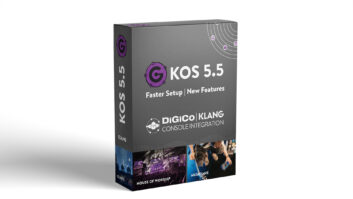Traditionally, A/V product categories don’t tend to be very newsworthy outside of the latest updated versions of existing products and technologies. But 2018 unusually saw five major foundational changes in audio and video:
- the introduction of the first 8K TVs;
- the release of the first ATSC 3.0 specifications that could lead to broadcast 4K TV;
- the introduction of the first combined premium sound-and-video certification program, IMAX Enhanced;
- the explosion of voice assistant smart speakers, TVs and soundbars; and
- the mainstreaming of so-called “true wireless” earbuds.
The appearance of 8K models is somewhat incongruous considering the still incomplete 4K content ecosystem. While ATSC 3.0 specs for broadcast 4K were finally released earlier this year, wide rollout amongst the nation’s broadcasters is not expected until 2020. Wide adoption of HEVC/H.265, along with 2018 rollouts of wider 5G and Wi-Fi 6/802.11ax pipes for more efficient delivery of 4K content, has been slow; wider adoption and deployments of all these new delivery platforms and standards will be major news in 2019.
So it may be less surprising that among the four TV makers who dipped their toes in 8K – Sharp, Samsung, TCL and LG – only Samsung is thus far the only one to be actually selling 8K sets in the U.S.
Bringing highly profitable 8K sets into the retail mix is understandable considering how quickly prices of 4K models have dropped to commodity levels. However, only 85,000 8K sets are likely to be sold worldwide this year, growing to a mere 5.4 million out of nearly 250 million total TVs projected to be sold in 2022, according to Paul Gray, director of research and analysis for technology, media and telecom for IHS Markit. Display Supply Chain Consultants (DSCC) and Insight Media agree with IHS’s conservative forecast, projecting global 8K sales of just 100,000 units in 2018, rising to 5.8 million in 2022.
The recently announced IMAX Enhanced certification program is even more nascent, yet to move beyond the initial group of select Sony TVs and Denon and Marantz AVRs. However, additional IMAX Enhanced certified products from additional TV and AVR makers are expected at CES.
Smart speakers as a category launched almost mature at CES 2018, and consumer adoption has been undeniably robust. According to CTA, sales of smart speakers are expected to reach 39.2 million units in 2018, up 44 percent over last year, reaching revenues of $3.2 billion, an increase of 64 percent.
But in 2018, voice control started to expand beyond small stand-alone speakers. Several companies including Samsung, Roku, Bose, Sonos and Polk unveiled smart voice-control soundbars, and several TV and TV-adjacent hardware vendors as varied as Hisense, TCL, Roku and TiVo have started experimenting with voice-controlled TV gear.
Sales growth charts of true wireless buds have been even more vertical. According to Futuresource, projected 2018 sales of true wireless buds are expected to leap 99 percent over last year, and the true wireless bud sales will rise to 6 percent of the total headphone market in 2018, double its share of headphones sales last year.













